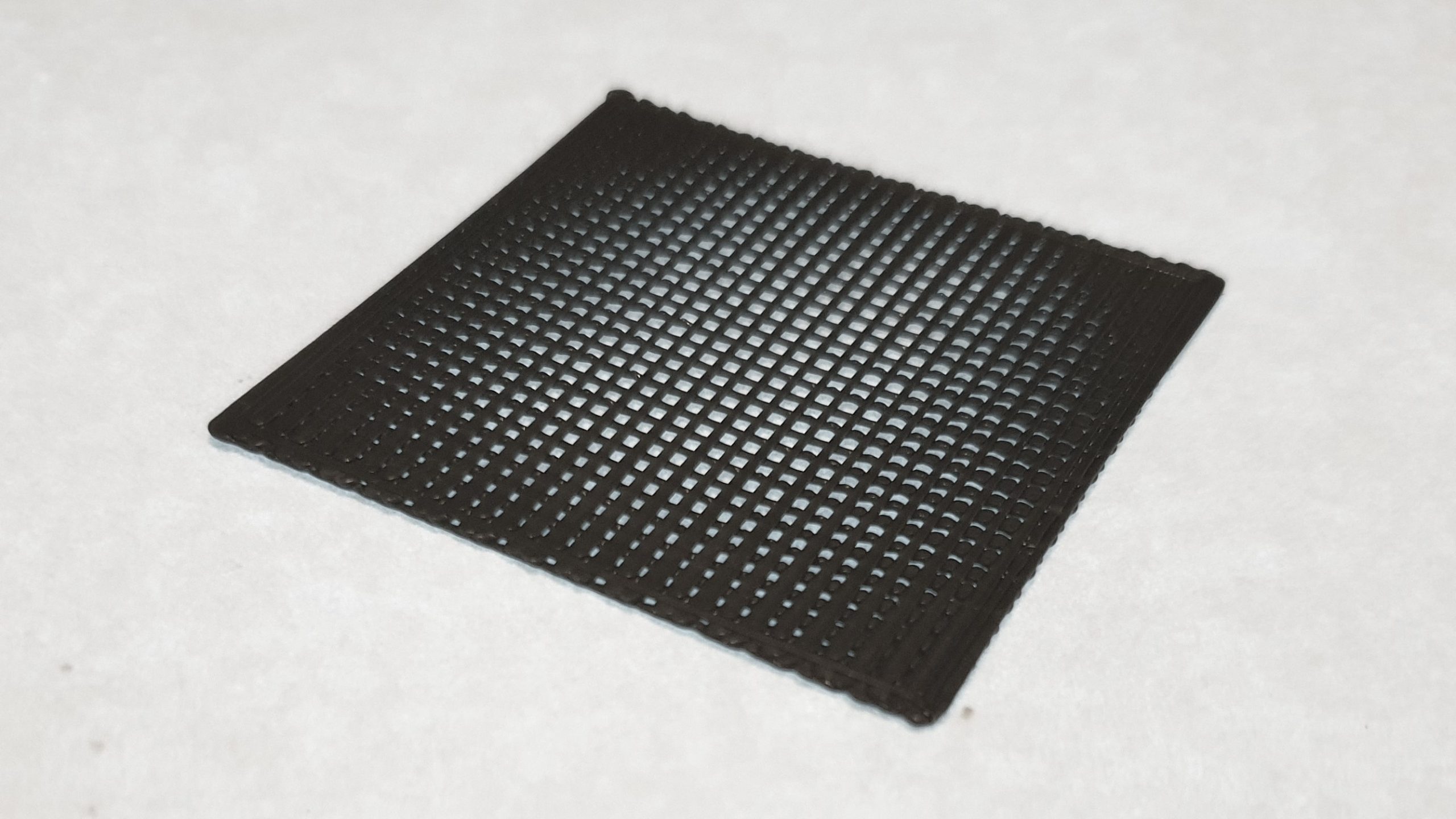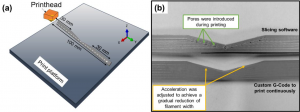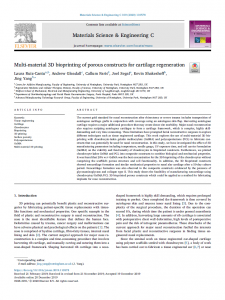Or go to www.fullcontrol.xyz to test online GCode generation. It requires no knowledge of FullControl, no installation of anything - easy!

Applications and research
New potential for manufacturing, research and development
Full control is useful for a wide range of applications. Associated journal papers are available for download at the bottom of this page.
Applications
The generalised nature of FullControl GCode Designer makes it suitable for a wide range of applications. The benefits of FullControl are most important for parts with fine geometric details or where high quality and repeatability is essential. This is because FullControl can allow unavoidable process limitations to be managed to minimise or eliminate defects. This also makes it an excellent tool for characterisation, calibration or hardware development.
Highly relevant fields are:
- Tissue engineering
- Microelectronics
- Construction
- Filters
- Drug delivery
- Microfluidics
- Challenging materials
- Mid-high production volumes (>100 units)
- Any process that uses GCode

Case studies and potential product types are discussed in detail in the journal paper presenting FullControl GCode Designer.
The concept shoe sole design shown in the video above was created using just thirteen features (approximately 1 KB data versus an estimated 1 GB for an STL model): five mathematically defined lines, three features for repetition or reflection of those lines, and five features to define geometric skew and nonplanar thickness variation. These features fully described 210,000 lines of GCode.
Case-study figures from the journal paper are shown below. If you have a particular use case for parts similar to any of these structures, please get in touch. For more details about these images, please click the link to download the paper (currently a preprint version – submitted for publication).
Case studies in the journal paper
Research
For fundamental research, the limitations of CAD and slicing software obstruct the investigation of underlying causes and effects. As an example, print speed is sometimes found to affect mechanical properties – but changing print speed affects extrusion width (and therefore porosity), layer cooling time (before the next layer), temperature of the extruded material (less time spent in nozzle), shear of the material, duration of acceleration, and many other factors. Lumping all these factors together does not allow useful translatable understanding. It is important to explicitly design test specimens and printing conditions to understand what’s really going on. FullControl was initially developed to allow such design, rather than trying to hack slicer parameters or writing one-off scripts.
The developer and collaborators have used FullControl GCode Designer (or preliminary versions of it) to allow cutting edge research – journal publications are available for download below. Please get in touch for support with your research – info@fullcontrolgcode.com

As an example, research was recently completed (“Variable extrusion rate paper” below) to understand how the width of extruded filaments can be dynamically varied by instantaneous adjustment of printing conditions (e.g. speed, extrusion rate, etc.). FullControl GCode Designer was used to develop a highly controlled specimen design (first image below), in which printing conditions were parametrically varied 11 times in a single printing procedure. The design also included specially design features to ensure steady-state printing between each set of printing conditions and to allow high-throughput automated microscopy analysis. The parametric aspect of the research study involved hundreds of unique printing conditions varying speed, extrusion rate, layer height, retraction, acceleration, jerk, temperature, material, for both Bowden and direct-drive printers. The specimens would have been impossible for slicing software to achieve. These state-of-the-art characterisations were achieved within ten weeks of a student first using a 3D printer. With effective guidance and good experimental design, FullControl allows a drastically new scale of research capabilities and process understanding.
Furthermore, FullControl GCode Designer was used later in the study for a range of case studies: a new slicing strategy (“streamlined slicing”), a micro-tensile testing dogbone specimen, and a mathematically graded mesh material (all shown in images below). This wide range of specimen types and case studies highlights the general nature of FullControl, and they were possible using relatively simple functionality within FullControl.



















